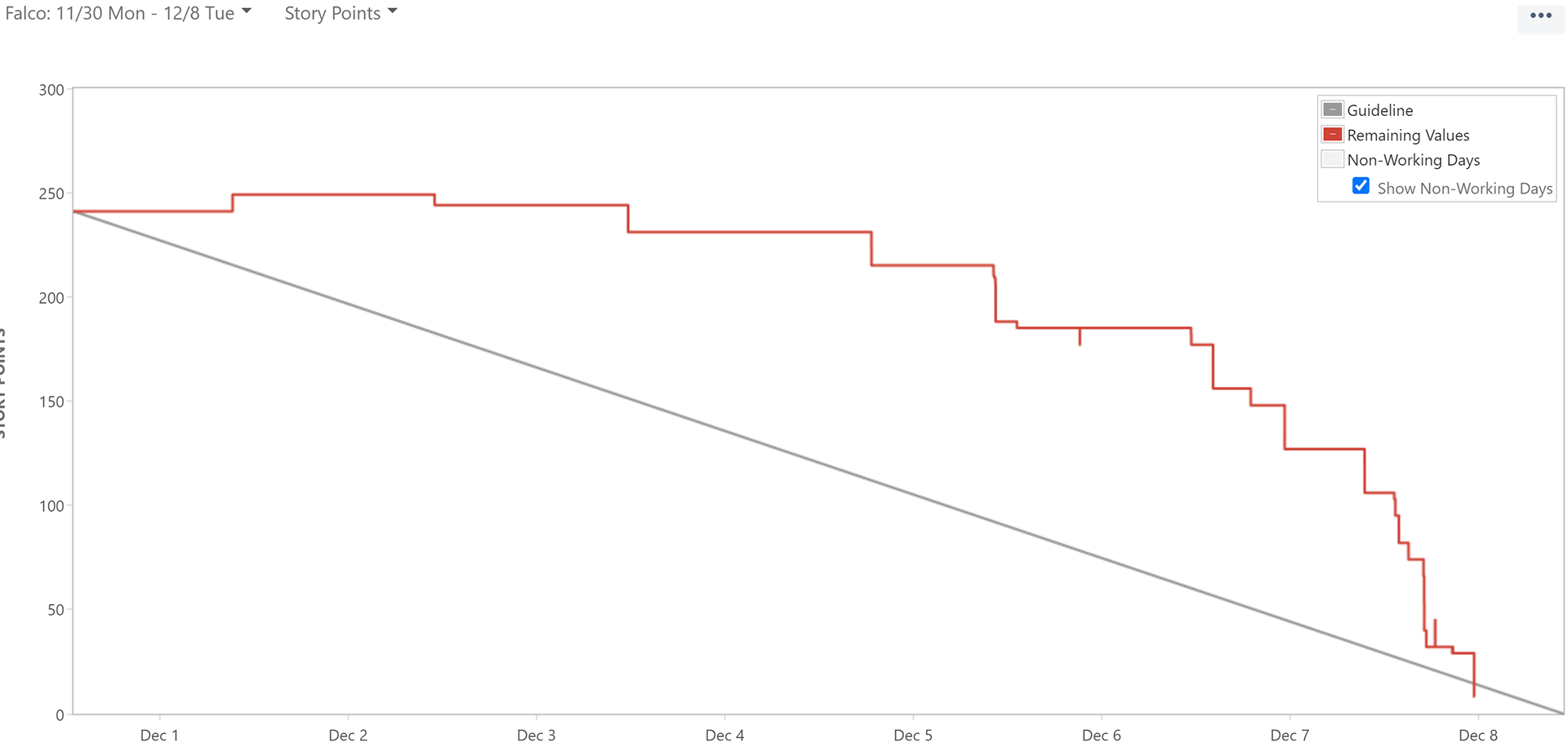A Cog in the Cosmic Machine
A narrative based resource management game for Bradley University's FUSE Showcase.
Overview
When: August 2020 - Present
Role: Producer
Team Size: 22 people
Tasks:
• Implemented JIRA & SCRUM into the production pipeline
- Organized and scheduled tasks for team members for 6 milestones, across 12 sprints, over the course of a year and a half
- Utilized burndown charts after each sprint
- Held standups, sprint retrospective/planning meetings
• Ran team and discipline leads meetings 4 times a week
• Clarified communication, messaging, and organizational issues from team members and solved them. Removed any and all bottlenecks
Visual Examples of Production
Sprint / Schedule Planning
Explanation:
• Image 1: Original milestone timeline given to me by my professors
• Image 2: Example of a milestone sprint schedule I created for my team
- End dates for each sprint were on days right before playtesting/milestone turn in days to maximize time
• Image 3: 2021 Q1 sprints created in Hansoft
- I learned Hansoft for this project as many AAA companies such as Volition and EA use it
• Image 4: Example sprint with a Kanban board containing detailed tickets
Reflection:
• Having a detailed sprint schedule made scope control much easier to determine
• Utilizing sprints in JIRA and roadmaps in Hansoft made communication clearer

(1) Deadlines

(2) Alpha Sprint Schedule

(3) Roadmap (Hansoft)

(4) Sprint Example (JIRA)
Burndown Charts
Explanation:
• Created burndown charts in JIRA for 8+ sprints
• Assigned storypoints in tickets to track how much work can be done in a sprint based on previous charts
• The Fibonacci sequence was used (1, 2, 3, 5, 8, 13) to determine storypoint values
- Ex: 1 = 1 hour | 5 = 1 day | 13 = the whole sprint
• Each sprint was named after a bird as our team is named after one
- Ex: Sprint 1 = Albatros | Sprint 2 = Blue Footed Bobby | Sprint 4 = Doodoo
Reflection:
• Problems: Tickets were either not moved or not completed in a steady pace. This resulted in crunch.
• Solution: Make moving tickets in JIRA part of stand-ups and break down tickets further

Sprint 6

Sprint 3

Sprint 5

Sprint 1
Meetings
Explanation:
Image 1 and 2: Team Meetings (Tue / Thu)
• Quick stand-ups by leads
• Made announcements
• Communicated information from professors to teammates
Image 3 and 4: Lead Meetings (Wed / Sat)
• Detailed stand-ups with leads
• Made high level decisions with leads
Reflection:
• Powerpoints helped create a detailed archive of work for each week
• Each meeting made decision making and dissemination of information very quick and efficient

All Team Meetings

An Example Slide from our Lead Meetings

All Lead Meetings

An Example Slide from our Lead Meetings
Role Sheets
Explanation:
• Created role sheets with each lead
• Clarified roles and responsibilities for each lead and discipline
• Each lead had to sign off on every role sheet to show they agreed on each disciplines roles and responsibilities
Reflection:
Role sheets acted as an unbiased source to help settle disputes about responsibilities

Role Sheet for Art

Role Sheet for Audio
Asset Lists
Explanation:
• I created the framework for each sheet in Google Sheets
• Each sheet contained basic asset information (name/description/status)
• Each asset had to be approved by relevant leads
Reflection:
• Asset lists greatly increased communication and clarity on goals and priorities
• Lead approval increased accountability

Asset List for Art

Asset List for Programming

Asset List for UX
Recap Video
Explanation:
• A video that showcased the progress made throughout the year
• I created this video and all the images in it were taken from a database I created
Reflection:
• Lots of claps, cheers, and tears after my teammates watched it
• Lots of people mentioned that this video inspired them to continue working hard and helped reduce their burnout